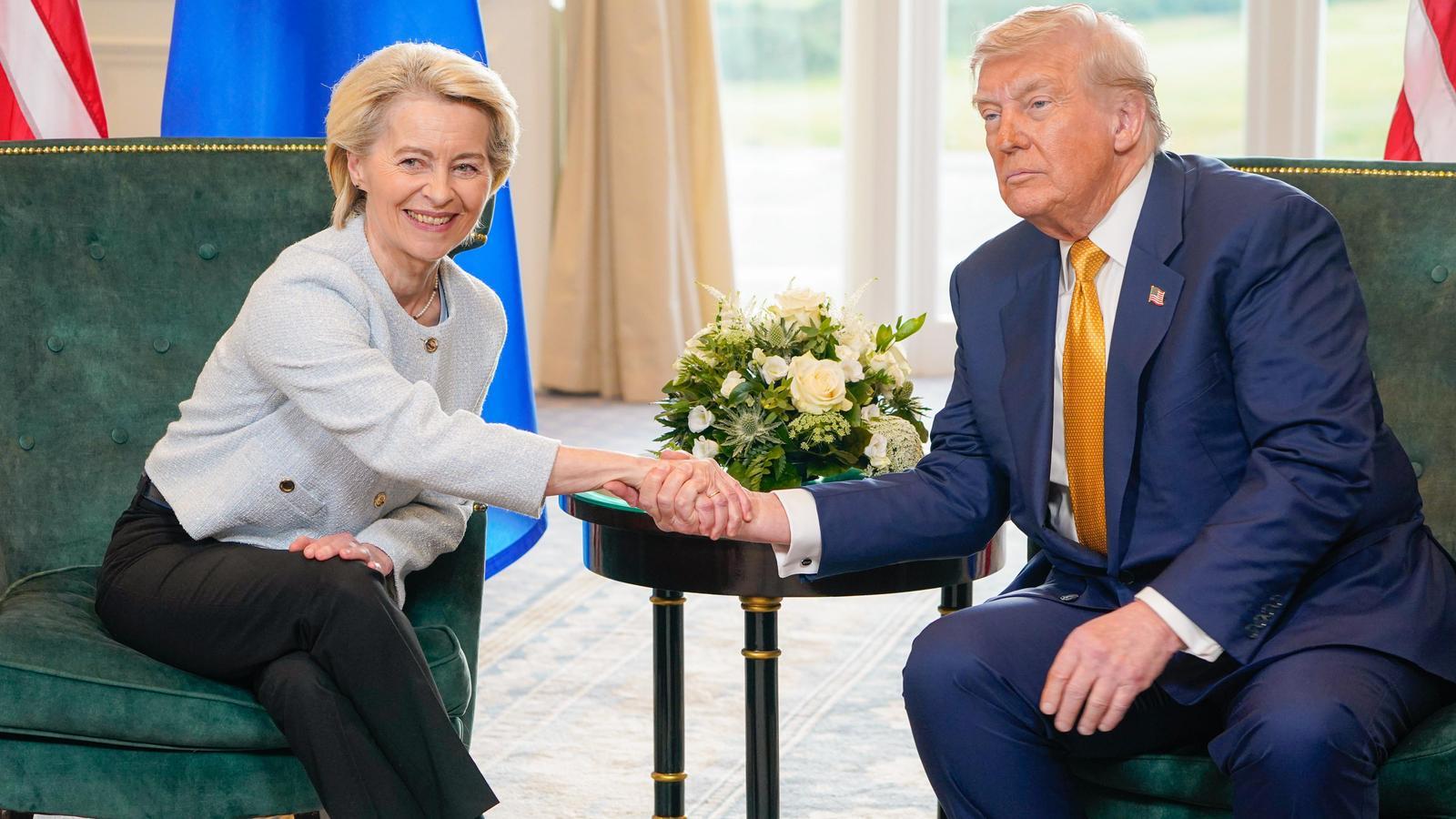Trump threatens the EU with 35% tariffs if it fails to fulfill its $600 billion investment promise.
The US president issued this warning with 48 hours to go before the new taxes come into effect and has not published any agreement.


WashingtonDonald Trump is putting even more pressure on the European Union after Brussels bowed its head and agreed to a trade deal with 15% tariffs on EU imports (only a 5% reduction from the initial 20% tariffs Washington wanted). With just 48 hours to go before the new global tariffs come into effect—the fine print of which is still unknown because no agreement has been made public—the US president has threatened the Europeans with 35% taxes if they don't keep their promise to invest $600 billion.
"They reduced their tariffs. They paid $600 billion, and so I reduced their tariffs from 30% to 15%, and a couple of countries came to us and said, 'How come the EU pays less than us?'" And I said, 'Because they gave me $600 billion,'" Trump explained in an interview on CNBC.
European Commission President Ursula von der Leyen committed that European partners would invest $600 billion in the US economy. But the reality is that the EU cannot force either companies or private shareholders to do so. Meanwhile, Trump talks about the pact as if it were some kind of guarantee that he will receive the investment. "The detail is this: $600 billion to invest in whatever I want, anything. I can do whatever I want with that money," the US president said. She has probably already heard the European complaints about the agreement.
The reality, obviously, is much more complex. It's not that the EU automatically transfers this amount to Washington, but rather that it's an expenditure on energy products that Brussels has committed to making subject to a series of conditions.
Tariffs on pharmaceutical products
Trump has also threatened special tariffs on pharmaceuticals, accusing the pharmaceutical industry of making "a fortune off of drugs," which they "make in China, Ireland, and other places." The president has said he will announce new taxes on these products "over the next week or so." "This is a separate category from the 15 percent tariffs that are pretty much on everything. These are excluded categories, as I like to call them, like steel or aluminum," the Republican said.
According to Trump's projections, it would start with "a small tariff," but "in a year, a year and a half at the most, it will go up to 150 percent, and then 250 percent, because we want drugs made in our country."
The tariff agreement reached by von der Leyen with Trump on July 27 includes a single 15% tariff on European goods in exchange for Brussels reaching a series of commitments: European purchases of US energy products worth $750 billion worth of artificial intelligence, a $600 billion investment in the US economy, and an increase in the purchase of military equipment from the United States. Both the $600 billion Trump was talking about and the $750 billion in energy are in question, since the European Commission cannot force companies and private shareholders to make these purchases.
Trump's statement on Tuesday that he can do whatever he wants with the $600 billion and the threat to force the EU to comply (when it is far from clear that it can) reflects the uncertainty generated by the new tariff agreements with Washington. Since there's still no black-and-white agreement, with all the loose ends tied up, each party is interpreting the agreement in its own way. And Trump seems to assume that the $600 billion will be some kind of payment, when nothing of that kind has been said.
In fact, negotiations between the EU and the US continue until the fine print is finalized. "I am in contact with Secretary [of Commerce Howard] Lutnick and Ambassador [US Trade Representative Jamieson] Greer as we work to implement the EU-US agreement of July, in all its aspects. The work continues in a constructive spirit," the European Commissioner said on Tuesday.
